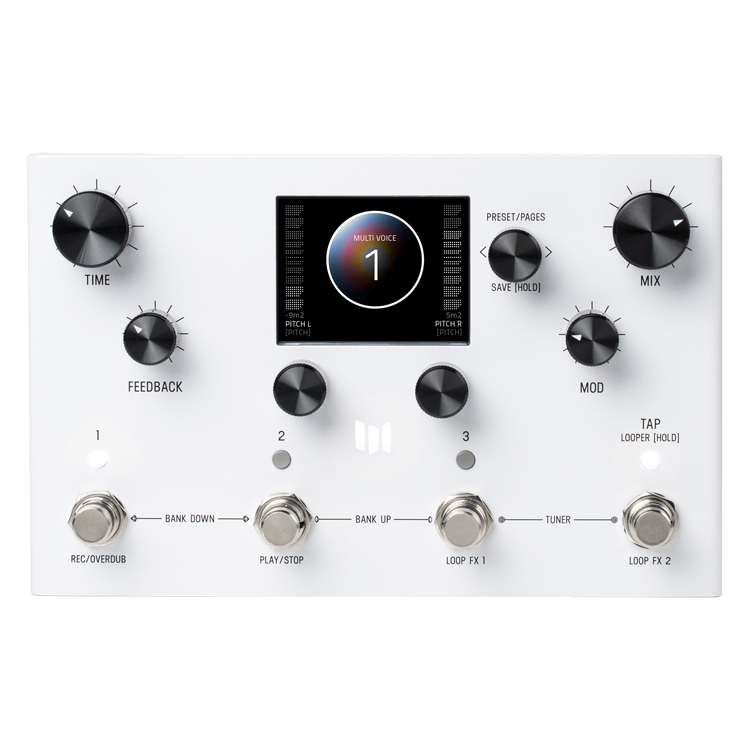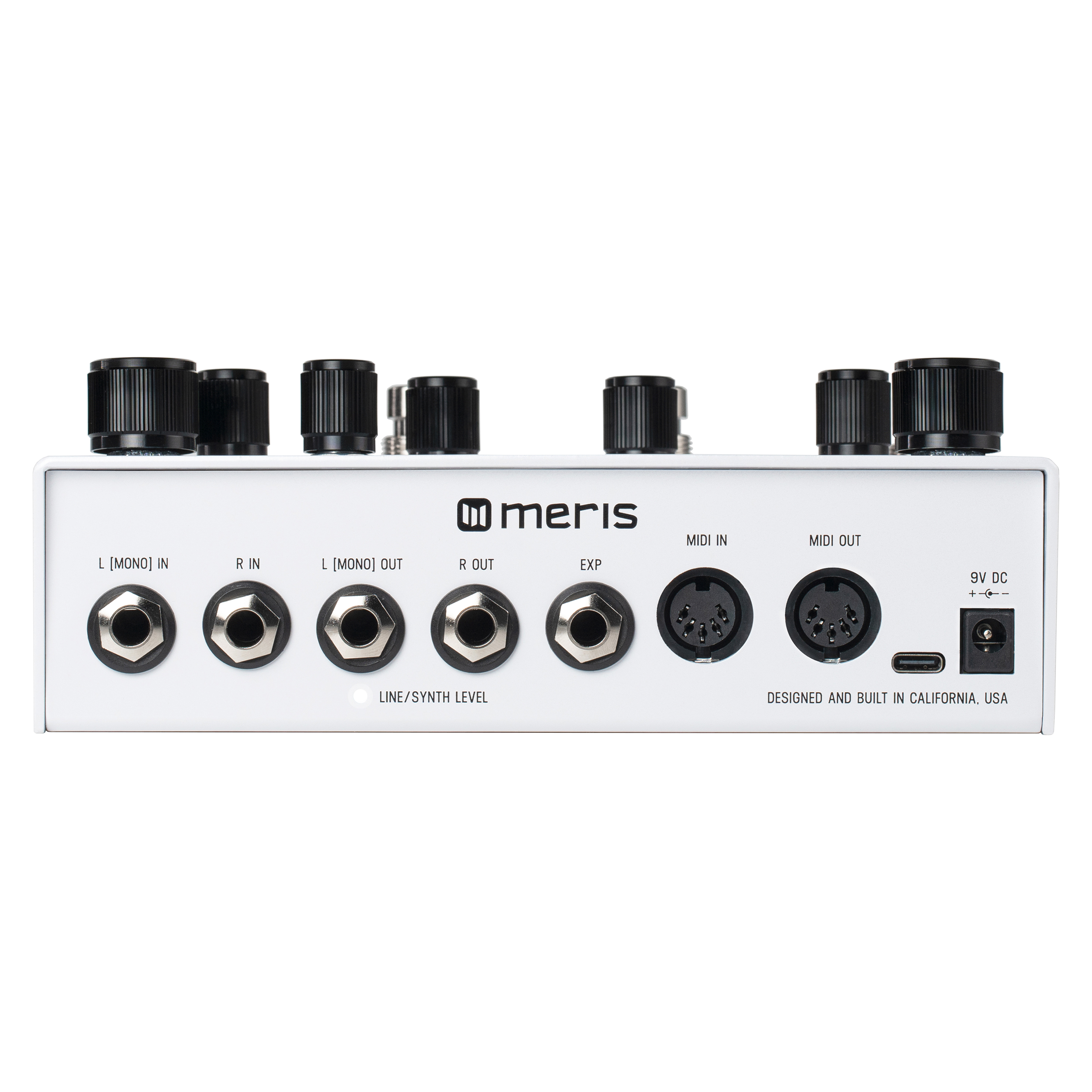Guitar World Verdict
Truly an instrument unto itself, the Meris LVX offers much more than delay effects by providing complex textures, rhythmic patterns, synth-like tones and more, ideal for the most adventurous and progressive musicians.
Pros
- +
Dual delay lines plus an independent 60-second looper.
- +
Structures (Standard, MultiTap, Multi Filter, Poly, Reverse and Series) and Delay types (digital, BBD and Magnetic) are individually selectable for each delay line.
- +
Dynamics, preamp, filter, pitch and modulation elements offer incredibly sophisticated sound design capabilities.
- +
The large full color display and multi-function control knobs make it easy to program effects that can be saved in 99 preset locations.
Cons
- -
It's not cheap – but nothing else sounds like this.
You can trust Guitar World
Former by three individuals who had previously worked for Line 6 and Strymon, Meris caught the interest of musicians when it introduced its first product, the Model 440 mic preamp for 500 series format lunchbox racks, in 2014.
More 500 series studio processors emerged over the next few years, followed in 2017 by the introduction of a highly impressive trio of pedals – the Ottobit Jr., Mercury7 and Polymoon – the first two being adapted from their 500 series rack counterparts.
The Enzo Multi-Voice Instrument Synthesizer pedal and Hedra pedal/500 series 3-Voice Rhythmic Pitch Shifter came along next, earning even more attention and acclaim from adventurous players and sonic explorers.
Now, nearly nine years after Meris made its debut, the USA-based company has introduced its most impressive pedal to date – the LVX Modular Delay System.
Like Meris’s previous pedals, the LVX is more of an instrument unto itself than a typical delay pedal or processing tool, offering users an incredibly powerful processor that can generate tones and textures unlike anything ever heard before.
With its intuitive interface, performance-friendly pedal design and infinitely versatile modular delay system architecture, the Meris LVX is a sound designer’s ultimate dream.
Features

Short of launching a dedicated website, this review can’t cover the incredible depth of the LVX’s features, but I’ll try to do justice to its main attributes. At its core, the LVX boasts two independent delay lines, each with a maximum of 2540ms of delay time. In addition to this, a true stereo 60-second looper is always available that can record processed and dry tones.
All the latest guitar news, interviews, lessons, reviews, deals and more, direct to your inbox!
The pedal provides 99 internal preset locations arranged in 33 banks of three presets each, including a “favorite” preset bank that always enables instant access to three presets.
The top panel provides Time, Feedback, Modulation and Mix knobs, three Controller knobs with push functions for accessing additional pages/parameters, and four footswitches to engage preset/bank selection, tuner, tap and looper functions along with pushbutton LEDs that mimic their respective footswitch functions.
Rear jacks include mono/stereo pairs of ¼-inch inputs and outputs, a ¼-inch expression pedal/switch jack, 5-pin DIN MIDI In and Out jacks and a USB-C port for loading firmware updates.
The heart of the LVX’s processing is a versatile and deep selection of delay structures and types. Structures consist of Standard, MultiTap, Multi Filter, Poly (based on the Meris Polymoon), Reverse and Series, each offering a vast selection of parameters to tweak and explore.
Delay types are digital, BBD (analog bucket brigade style delay) and Magnetic (tape delay with saturation, degradation and wow and flutter).
The delays can be further processed with sophisticated dynamics, preamp, filter, pitch and modulation elements that include uncommon and unique processing like diffusion, bit crusher, ladder filter, poly chroma, granulize and more. The ADA, DSP, noise and other specs, in short, are state of the art.
Performance

While one could use the Meris LVX as a straightforward delay unit, that would be like driving a Bugatti Chiron on half-mile errands and never exceeding 20mph. The power and appeal of the LVX lies in its otherworldly and sophisticated sonic landscapes that simply must be heard to be believed.
As a result, the factory presets do not include the usual dotted-eighth note and multi-tap effects but instead offer non-conventional sounds, including wild rhythmic patterns, unusual sequenced pitch shifting, synth-like pads, shimmering reverb-like resonance with infinite tails and sounds that evoke psychedelic outer space excursions, and bass-heavy descents into the depths of hell.
You’ve probably heard the LVX on sci-fi, horror and fantasy productions, and if not you very likely will (get one now if you have any ambitions for doing soundtrack work).
The full-color graphic interface makes it satisfyingly easy to program incredibly sophisticated sounds. Editing presets involves pushing the C3 knob to access the edit page then scrolling through a rotating selection of categories with the C1 knob and adjusting parameters/settings with the C2 knob.
An expression pedal can be used to morph between a variety of selected parameters simultaneously for complex effects. A growing variety of presets are also available for download from the robust LVX user community.
Specs
- PRICE: $599
- TYPE: Modular Delay System with advanced processing
- CONTROLS: Time, Feedback, Modulation, Mix knobs, three Controller knobs with push functions, four footswitches to engage preset/bank selection, tuner, tap and looper functions with pushbutton LEDs
- SOCKETS: 5 Pin DIN MIDI I/O Jacks, Line/Synth Level, Expression Pedal Jack, USB-C (for firmware updates only), stereo inputs/outputs, 9VDC center-negative power
- BYPASS: Buffered or true bypass
- POWER: 9V PSU, 300mA
- CONTACT: Meris
Chris is the co-author of Eruption - Conversations with Eddie Van Halen. He is a 40-year music industry veteran who started at Boardwalk Entertainment (Joan Jett, Night Ranger) and Roland US before becoming a guitar journalist in 1991. He has interviewed more than 600 artists, written more than 1,400 product reviews and contributed to Jeff Beck’s Beck 01: Hot Rods and Rock & Roll and Eric Clapton’s Six String Stories.


